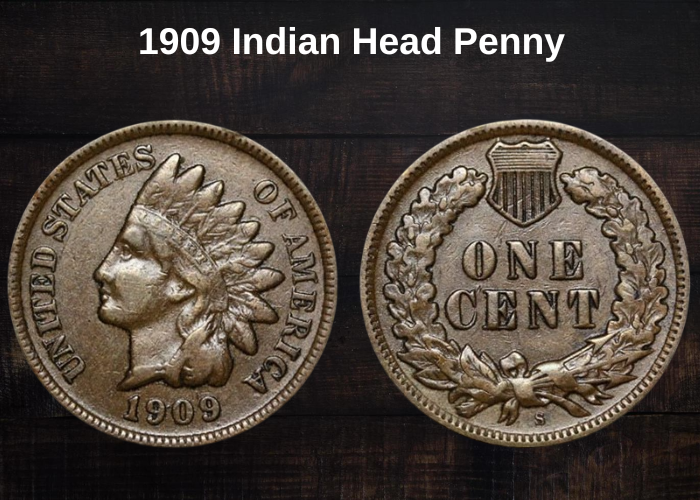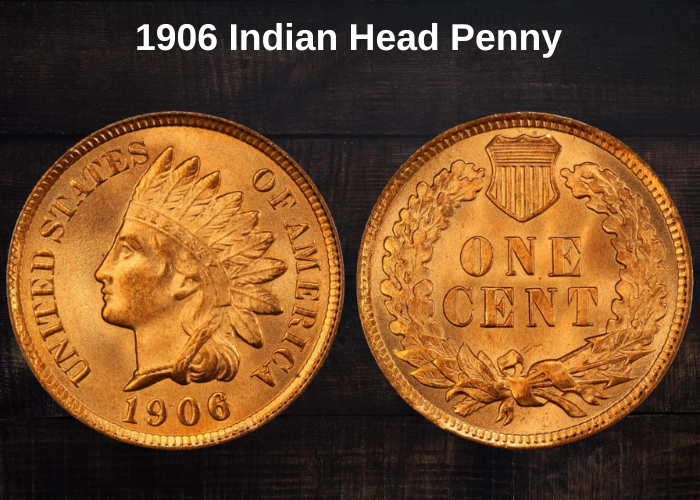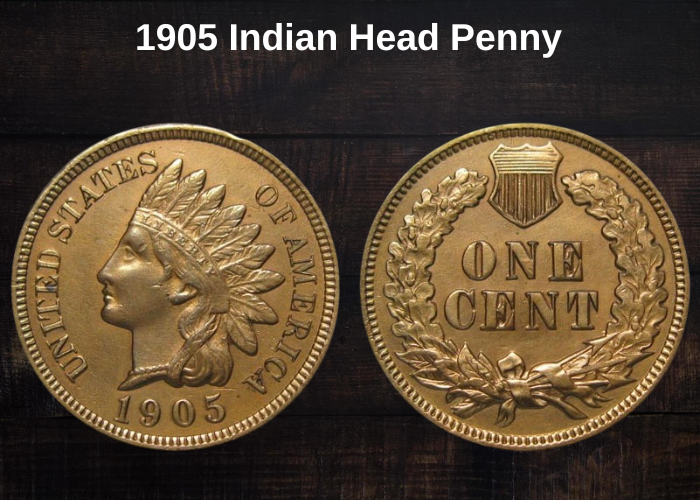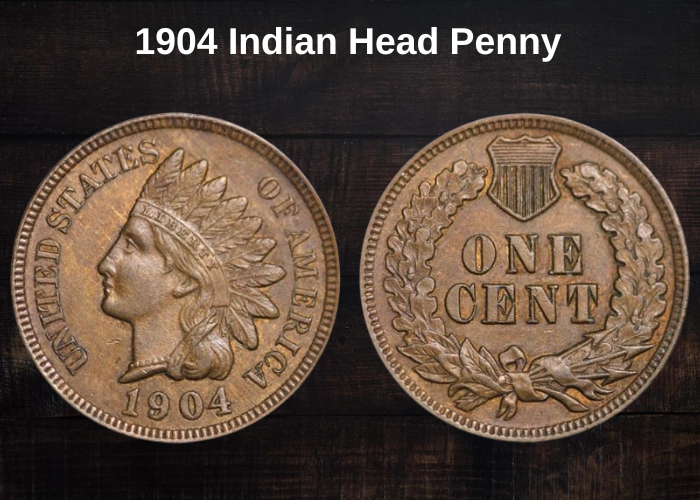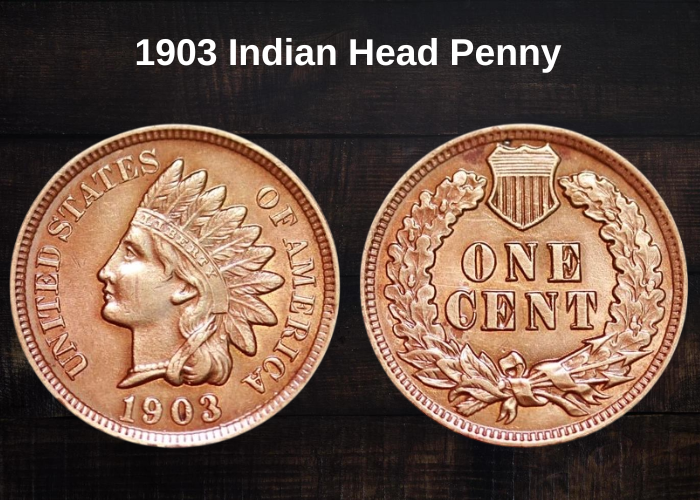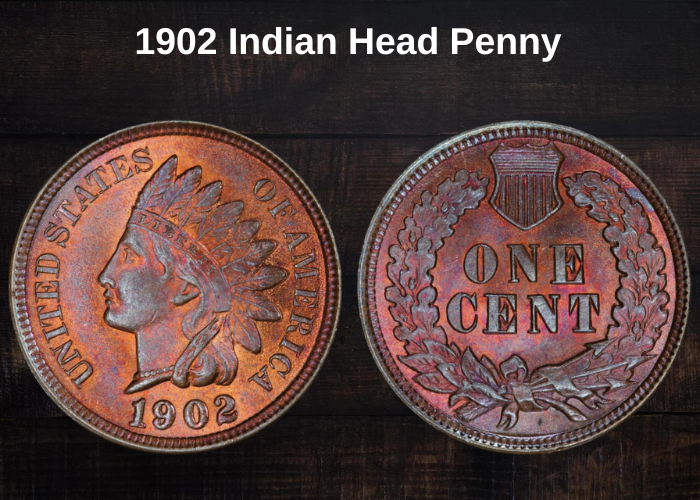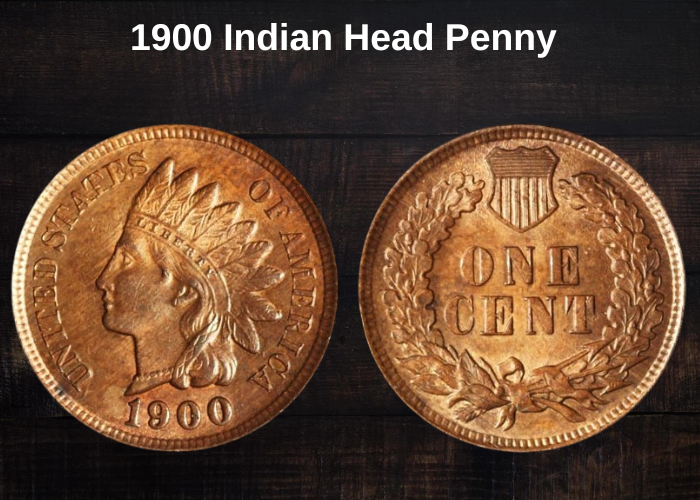The 1908 Indian Head penny is a noteworthy coin, not just because of its historical significance, but also due to its potential value among collectors. The Indian Head penny series, which ran from 1859 to 1909, features a distinct design, and the 1908 coin holds particular importance as it marks the first time these coins were struck in San Francisco.
This year is a key one, as it was the last full year the coin was minted before its replacement. Let’s explore the value of the 1908 Indian Head penny based on its mint mark, condition, and color.
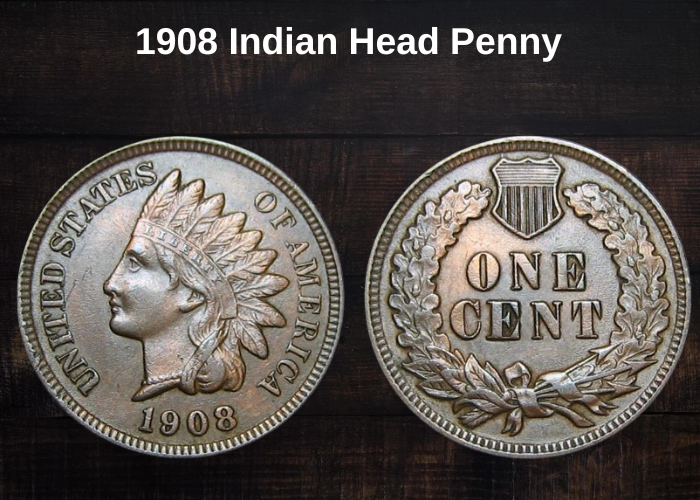
1908 Indian Head Penny Value Chart
Without Mint Mark (Philadelphia)
| Grade | MS Brown | AU58 About Uncirculated | MS63 Select Uncirculated | MS65 Gem Uncirculated | MS67 Superb Gem Uncirculated |
|---|---|---|---|---|---|
| Color: Brown | $18 | $48 | $90 | $260 | – |
| Color: Red-Brown | – | $110 | $285 | – | – |
| Color: Red | $160 | $750 | $32,500 | – | – |
With Mint Mark “S” (San Francisco)
| Grade | MS Brown | AU58 About Uncirculated | MS63 Select Uncirculated | MS65 Gem Uncirculated | MS67 Superb Gem Uncirculated |
|---|---|---|---|---|---|
| Color: Brown | $190 | $300 | $525 | $1,500 | – |
| Color: Red-Brown | – | $700 | $2,100 | – | – |
| Color: Red | $900 | $2,850 | $32,500 | – | – |
Summary of Key Points:
- 1908 No Mint Mark (Philadelphia): In MS Brown condition, it’s worth around $18, but red examples can reach up to $32,500 for MS63 Red coins.
- 1908 “S” Mint Mark (San Francisco): Coins with the “S” mint mark are rarer and more valuable. In MS Brown condition, they start at $190 and can go as high as $32,500 for a red specimen in MS63 or better.
The 1908 Indian Head penny is an excellent example of a coin with both historical and collectible value, especially in high grades or with red coloration, which significantly increase its price.
1908 Indian Head Penny Grading
To evaluate the condition and value of your 1908 Indian Head penny, focus on the highest points of the coin, which are the areas most prone to wear. Here’s a step-by-step guide to inspect your coin:
Key Areas to Examine:
- Obverse (Front) of the Coin:
- The cheeks and ear of Liberty, who is wearing the feathered headdress.
- The details of the feathers in her headdress.
- Reverse (Back) of the Coin:
- The oak leaves and branches in the wreath.
How to Inspect:
- Place the Coin Under Direct Light:
- Hold the coin at an angle to observe how the light interacts with the surface.
- Check the High Points:
- If the high points are well-defined with good luster, your coin may be uncirculated.
- If the high points appear flat, smooth, or lack luster, it indicates the coin is worn and has been circulated.
Coin Grading Scale:
The grade of your coin directly influences its value. Here’s a breakdown of the grading system:
| Grade | Description |
|---|---|
| 1 – Basal State-1 | Extremely worn, details are almost unrecognizable |
| 2 – Fair | Some details left, but heavily worn |
| 3 – Very Fair | Slightly more details visible, still worn |
| 4, 5, 6 – Good | Major features visible, but worn |
| 7, 8, 10 – Very Good | Clearer details, but still shows wear |
| 12, 15 – Fine | Moderate wear, good definition |
| 20, 30 – Very Fine | Light wear, sharp details |
| 40 – Extremely Fine | Minimal wear, details sharp |
| 50 – About Uncirculated | Little wear, excellent luster |
| 60 – Mint State | No wear, full luster, as it came from the mint |
| 65 – Mint State | Exceptional quality, superior luster |
| 70 – Mint State | Perfect condition, flawless |
By understanding how to inspect your coin and use the grading scale, you can get a clearer idea of its condition and value. Uncirculated coins with well-preserved details are far more valuable than worn ones in a lower grade.
1908 No Mint Mark Indian Head Penny Value

The Indian Head penny, first struck in 1859, features a young girl adorned with a native feathered headdress, which was commonly worn by Indian chiefs at the time.
A popular story suggests that the designer, James Longacre, was inspired by his young daughter, Sarah, who allegedly borrowed this headdress from a Native American chief. The story goes that he used this moment to immortalize her image on the coin’s obverse. However, this tale has been debunked. It was discovered that Longacre had already been sketching similar designs for years before the coin was minted, depicting a woman with a distinct Greek nose, making it unlikely to be his daughter.
The obverse of the coin carries the words “United States of America” along the rim, with the year of mintage inscribed at the bottom. On the reverse, the design is more minimalist, showing a wreath made of oak leaves, with a small bow at the bottom. At the top, there’s a small shield, and in the center, the words “One Cent” are displayed.
This design remained in place until 1908, marking the last full year the Indian Head penny was the sole one-cent coin. In 1909, the Lincoln wheat penny replaced it as the official one-cent coin, ending the Indian Head penny’s reign.
In 1908, the aftermath of the 1907 financial crisis caused a significant drop in coin production. Less than one-third of the Indian Head pennies minted in 1907 were struck in 1908, which makes these coins much scarcer and more valuable today.
In Philadelphia, around 32 million 1908 (P) Indian Head pennies were minted. As typical for coins struck at the Philadelphia mint, they did not feature a mint mark. While coins in circulated conditions are still relatively common, uncirculated pieces are also fairly abundant, as many collectors were able to preserve them.
Here’s an overview of the value of the 1908 (P) Indian Head pennies:
- Circulated (fine condition): These can be worth around $5 today.
- Extremely fine condition: The value rises to $18.
- AU58 (About Uncirculated): In top circulated condition, the coin could be worth about $48.
However, when it comes to uncirculated coins, their value is not just based on the condition but also on the color of the coin. The 1908 (P) Indian Head pennies are made of 95% copper, so they’re prone to browning over time. The coins are typically graded based on their color, which significantly influences their price:
- MS Brown: Has lost almost all of its original red copper color.
- MS Red Brown: Shows a mixture of red and brown tones, retaining 5% to 9% of the original red luster.
- MS Red: Retains 95% or more of the original red shine.
Collectors are especially keen on MS Red coins due to their pristine condition. But even MS Brown or Red Brown coins can be valuable:
- An MS63 1908 (P) Indian Head penny in MS Brown might be worth around $90, while the same coin in MS Red could fetch about $160.
- In MS65, the values jump significantly: MS Brown at $260, Red Brown at $285, and the MS Red example reaching $750.
The 1908 (P) Indian Head pennies in MS67 are incredibly rare and are typically found only in the MS Red grade, with these coins commanding a hefty $32,500!
1908 S Indian Head Penny Value
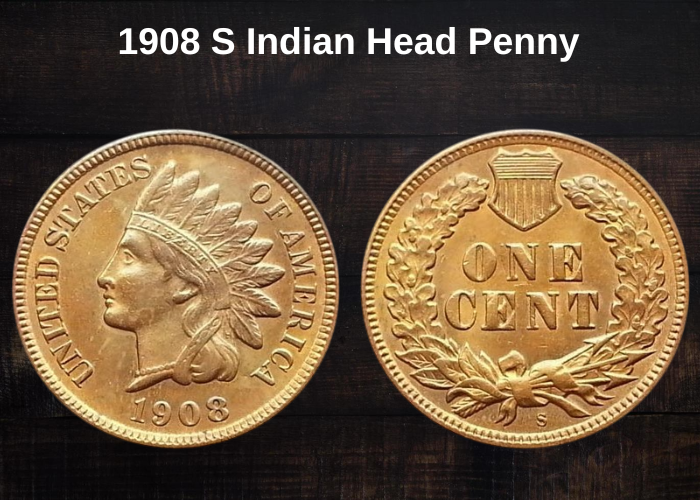
Until 1908, the Philadelphia Mint was the exclusive mint responsible for producing the Indian Head pennies. However, 1908 marked a significant change as the San Francisco Mint was also tasked with striking these coins. This made the 1908 S Indian Head penny particularly special and highly valuable.
All 1908 S coins bear an “S” mint mark on the reverse, just beneath the oak branch wreath.
The total mintage for the 1908 S Indian Head penny was just above 1.1 million coins, which makes it a rare and key date for collectors. The low mintage adds to its desirability and scarcity.
Due to their rarity, many collectors set aside 1908 S Indian Head pennies when they were first issued, and they were further preserved over the years. As a result, finding them in circulated condition is difficult, and those that have survived the century tend to show moderate wear.
One notable feature of the 1908 S Indian Head pennies is their weak strike. Even coins in excellent or mint-state condition might show slightly smoother high points and less intricate design lines. Despite this, these coins remain highly collectible.
Price Estimates for 1908 S Indian Head Pennies:
- In circulated condition, even a poorer-quality 1908 S Indian Head penny can fetch about $50.
- In MS Brown and extremely fine condition, these coins are valued at around $190.
- Mint-state 1908 S Indian Head pennies are rare, with the MS Red Brown examples generally worth more due to the specific toning of the San Francisco Mint planchets. Here’s how their value changes:
- MS63 (MS Brown) coins are worth around $525.
- MS Red Brown coins increase to $700.
- MS Red coins—those with more vibrant luster—can go for as much as $900.
The 1908 S Indian Head penny in MS67 is incredibly rare, and when found, it is typically in MS Red condition. Such a well-preserved coin is worth around $32,500 today!
These factors, including the weak strike, unique colorations, and rarity, make the 1908 S a highly sought-after coin for collectors.
Rare 1908 Indian Head Penny Error List
Due to the relatively low mintage of the 1908 Indian Head penny, there aren’t many common errors compared to coins struck today. However, because mint errors are quite rare in this issue, coins with errors become one-of-a-kind and are highly prized by collectors. These mint errors can significantly increase the value of your coin.
Here are some rare 1908 Indian Head penny mint errors that can enhance the value of your coin:
1908 Indian Head Penny Misplaced Date Error
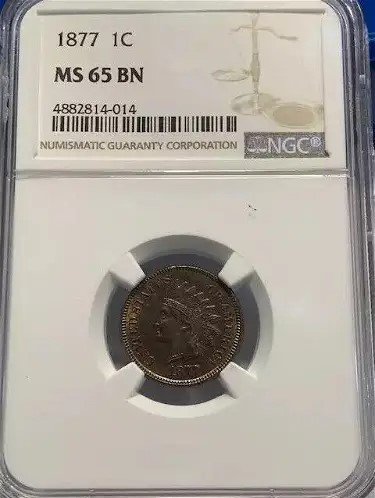
A misplaced date error occurs when a coin has a faint re-stamp of the numerals of the date below the actual mintage year. On a 1908 penny, this error may not be immediately obvious, but with a magnifying glass, the second impression of the date becomes clear.
The most likely cause of a misplaced date is that an employee at the Mint tested the date die on the edge of a coin to ensure it was functioning properly. Since the edge of the coin would eventually be covered by the coin’s denticles (the raised beads around the rim), it was assumed that no one would notice the second stamp of the date.
Since 1908 was the final year that dates were hand-punched into the master dies, misplaced dates or repunched dates are quite common among coins of this year.
This error can add value to a 1908 penny, as collectors often seek out these unique variations. For example, an MS65 Brown 1908 Indian Head penny with a misplaced date error sold for around $100.
If you’re still unsure about the value of your coins, you can always appraise and sell them for free through verified platforms that specialize in coin collection.
1908 Indian Head Penny Double-Struck Error
A double strike error happens when a coin, after being struck by the die, is not properly ejected from the collar. As a result, it gets stuck in place and is struck a second time. Sometimes the second strike may not be immediately noticeable, but when it is off-center, the error becomes very clear.
For example, a circulated 1908 Indian Head penny in a Good-6 grade (which typically has a value of about $2) was found with a double strike error and sold for nearly $100 in 2020. This illustrates how an error, even on a coin in a lower grade, can significantly increase its value compared to a standard issue coin.
1908 Indian Head Penny Struck 20% Off-Center Error
An off-center strike occurs when the coin’s die doesn’t strike the planchet in the exact middle, leading to a portion of the design being cut off, often leaving a blank area on one side of the coin.
For instance, a 1908 Indian Head penny graded MS61 Brown was found with an off-center strike where the mintmark area and the words “States Of” on the obverse were completely missing, resulting in a 20% off-center error. This unique coin sold for $400, highlighting how off-center strikes can significantly increase the value of a coin due to their rarity and distinctive appearance.
1908 Indian Head Penny FAQs
Here are some frequently asked questions (FAQs) about the 1908 Indian Head penny:
Where is the S on a 1908 Indian Head penny?
On the San Francisco-minted 1908 Indian Head pennies, you will find the “S” mint mark on the reverse side of the coin. It is located near the bottom, positioned between the ribbon tying the oak leaves together and the coin’s lower rim.
How many 1908 Indian Head pennies were made?
In 1908, the Philadelphia Mint struck 32,326,367 Indian Head pennies. Additionally, the San Francisco Mint produced 1,115,000. This gives a total mintage of 33,441,367 Indian Head pennies for that year.
Which Indian Head pennies are valuable?
Certain key dates make Indian Head pennies especially valuable, such as the 1894 double-date penny or those minted between 1869 and 1872. The 1908 S Indian Head pennies are particularly sought after because it was the first year the San Francisco Mint produced coins in this series, and it also marked the final year for the Indian Head penny.
Are Indian Head pennies lucky?
Some numismatists and collectors believe that certain coins, including the Indian Head penny, can bring good luck due to their rarity and historical significance. So, if you’re not planning on selling your 1908 Indian Head penny, it could serve as a good luck charm when you need a little extra luck!

